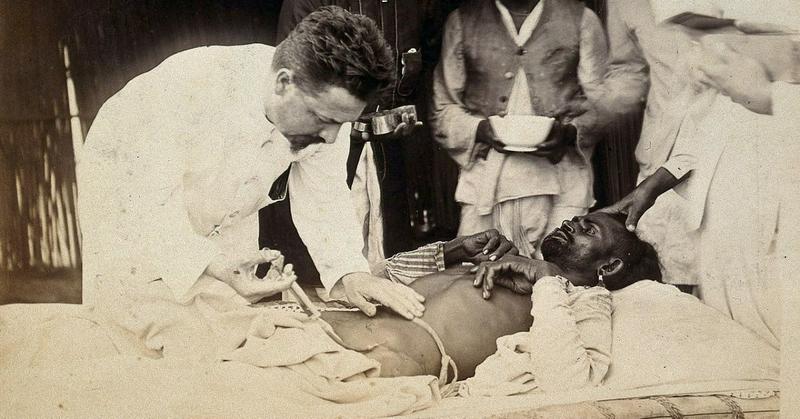1894: Two Scientists Discovered The Bacteria That Causes The Plague At The Same Time
By | August 23, 2020

By 1894, the bubonic plague had been, well, plaguing the globe for centuries. Scientists had been trying for just as long to figure out just what the disease was and how to stop it, but that fateful year, two of them succeeded at the same time.
Kitasato And Yersin
Kitasato Shibasaburō and Alexandre Yersin were two of the most celebrated bacteriologists in their field way before they discovered the bacillus responsible for the bubonic plague. Yersin, who had dual French and Swiss citizenship, studied under Louis Pasteur before working with Emile Roux to develop an anti-rabies serum. He practiced medicine throughout Asia, and in 1894, he was sent to Hong Kong at the request of the French government and the Pasteur Institute to investigate the Plague.
Kitasato was born in Tokyo in 1853. After studying medicine in Japan, he traveled to Berlin, where he studied under microbiologist Robert Koch, growing the first tetanus bacillus sample in pure culture and developing a serum therapy for tetanus with Nobel Prize–winner Emil von Behring. After setting up the Institute for Study of Infectious Diseases in Japan, he traveled to Hong Kong to study the Plague as well. While these two would never cross paths, the combination of their independent research changed the world.

Kitasato Welcomed In Hong Kong
Doctor Kitasato arrived in Hong Kong on June 12, 1894, days before Yersin set foot in the country. Aside from the head start, he had the advantage of a crack staff as well as name recognition that allowed him to meet with members of the local government. Through his connections, he gained access to crucial equipment and, most importantly, autopsy rooms. Kitasato was practically swimming in Plague-soaked specimens, so he could work fast and look through an entire body for evidence of the Plague. He was living in researcher heaven. The same can't be said for Yersin.

Yersin Worked In A Hut
When Yersin arrived in Hong Kong on June 15, his welcome was much less warm. At the time, Hong Kong was an English colony, and Yersin only spoke French and Swiss. Language barrier aside, it didn't help that England and France were on poor terms. Denied a living or work space in any of the city's hospitals, Yersin and his single assistant built a straw hut by hand and began studying the disease.
Eventually, Yersin got his hands on the same tissue that Kitasato used in his experiments, but it turned out that he had something Kitasato didn't. Yersin's hut was exactly what he needed to properly research the disease because the Plague's bacterium develops best at a lower temperature. Yersin was basically living in the Plague's breeding grounds. Yay?

Five Fateful Days
The same day that Yersin arrived in Hong Kong, Kitasato announced that he discovered the bacteria responsible for bubonic plague. He described them as round pairs of bacteria called cocci when they appeared in blood samples but rod-shaped when they appeared in tissue from the lymph nodes, also known as buboes, hence the Plague's name. Members of the British medical journal The Lancet couldn't decipher some of his notes or his images, however, creating confusion among researchers back in England.
On June 20, Yersin described the cause of the Plague as a rod-shaped microbe that refused to take on a purple dye called a Gram stain. His information may have been five days late, but it was spot on. Despite the discrepancies, bacteriologists were happy to have two different accounts of the same deadly organism.

Who Discovered The Bacteria That Causes The Plague?
People love to pick sides over minor issues all the time (see: the great "Is a hot dog a sandwich?" debate), and the discovery of the pathogen that causes the Plague is anything but minor. At the time, everyone was just happy to have the Plague nailed down, but after the excitement of the near simultaneous discovery wore off, the controversy over who gets the credit simmered into being.
Even though Kitasato was five days earlier, his reports were vague and don't all make sense, whereas Yersin's account was both clear and accurate. In fact, some medical experts believe that Kitasato mistook two different types of organisms—the Plague and a round bacteria that causes pneumonia—as the same, explaining his confusing description. As a result, some members of the medical community believe Yersin deserves all of the credit, and the bacteria in question, Yersinia pestis, has even been named after him. Whatever you think, it's clear that both men made important contributions to the identification of the bubonic plague's infectious agent.

